中职英语基础模块上册unit
- 格式:pptx
- 大小:3.60 MB
- 文档页数:20
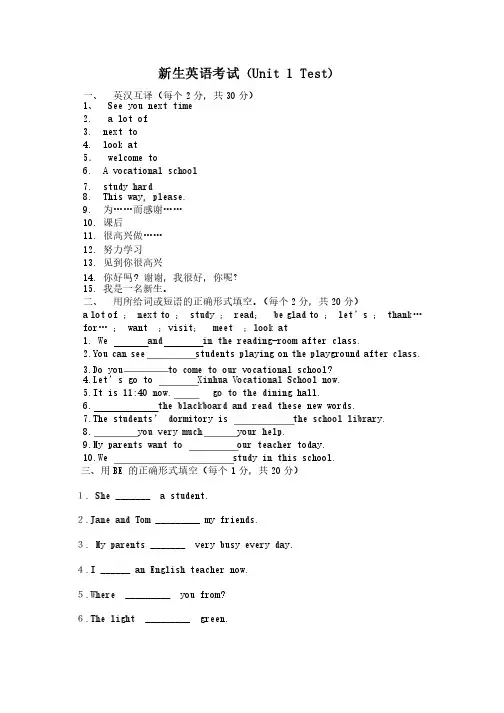
新生英语考试(Unit 1 Test )一、一、 英汉互译(每个2分,共30分)分)1、 See you next time2. a lot of3. next to4. look at5. welcome to6. A vocational school7. study hard8. This way, please.9. 为……而感谢……为……而感谢……10. 10. 课后课后课后11. 11. 很高兴做……很高兴做……很高兴做……12. 12. 努力学习努力学习努力学习13. 13. 见到你很高兴见到你很高兴见到你很高兴14. 14. 你好吗你好吗你好吗? ? ? 谢谢,我很好,你呢?谢谢,我很好,你呢?谢谢,我很好,你呢?15. 15. 我是一名新生。
我是一名新生。
我是一名新生。
二、二、 用所给词或短语的正确形式填空。
(每个2分,共20分)分)a lot of of ;; next to to ;; study study ;; read read;; be glad to to ;; let let’’s s ;; thank thank……for for…… ; want want ;;visit visit;; meet meet ;;look at1. We and in the reading-room after class.2.You 2.You can can see students see students playing playing playing on on the the playground playground playground after after after class. class.3.Do you to come to our vocational school?4.Let 4.Let’’s go to Xinhua Vocational School now.5.It is 11:40 now. go to the dining hall.6. the blackboard and read these new words.7.The students 7.The students’’ dormitory is the school library.8. you very much your help.9.My parents want to our teacher today.10.We study in this school.三、用BE BE 的正确形式填空(每个的正确形式填空(每个1分,共20分)分)1. She _______ a student.2.Jane and Tom _________ my friends.3. My parents _______ very busy every day.4.I ______ an English teacher now.5.Where _________ you from?6.The light _________ green.7.My name _________ Li Dong.8._________ they your new friends?9. The girl______ Jack's sister.1010. ______ your brother in the classroom? . ______ your brother in the classroom?1111. Whose dress ______ this? . Whose dress ______ this?1212.That ______ my red skirt. .That ______ my red skirt.1313. Some tea ______ in the glass. . Some tea ______ in the glass.1414.Gao shan's shirt _______ over there. .Gao shan's shirt _______ over there.1515. ______ David and Helen from England? . ______ David and Helen from England?1616. . There ______ some milk on the table . And there _______ any _______ any coffee coffee here .1717. There ______ a newspaper in the living room. . There ______ a newspaper in the living room.1818. ______ there any books in the room? Yes, there ______ . . ______ there any books in the room? Yes, there ______ .1919. There ______ a pencil, a ruler and two books on the desk. . There ______ a pencil, a ruler and two books on the desk.2020. There ______ two glasses and a cup on the table. . There ______ two glasses and a cup on the table.四、句型转换(每个2分,共20分)分)1. There is a teacher in the office . 否定句否定句 ________________________ ________________________2. Is there a flower on the table ? 肯定回答肯定回答____________ ____________肯定句肯定句 __________________ __________________3. There are some pens in the box . . 一般疑问句一般疑问句一般疑问句 __________________________ __________________________4. There isn isn’’t any water in the galss . . 肯定句肯定句肯定句 ________________________ ________________________5. There are two eggs and one cake here . 对划线部分提问对划线部分提问_______________________6. What 6. What’’s on the box ? (a present) s on the box ? (a present) 回答问题回答问题回答问题_______________________________7. How many books are there on your desk ? 回答问题回答问题___________________________8. There is a bird in the tree . 8. There is a bird in the tree . 对划线部分提问对划线部分提问对划线部分提问_________________________________9. There are lots of people in the park . 对划线部分提问对划线部分提问____________________________10. There is some water in the glass . 对划线部分提问对划线部分提问____________________________一般疑问句并回答一般疑问句并回答一般疑问句并回答 _________________________________ _________________________________否定句否定句否定句______________________________________________________________五、阅读题(五、阅读题(1010分)分)No.4 middle School Kunming ,yunnan April 2nd ,2004 Dear editor (编辑) ,I live in a beautiful city . Many visitors come to my city . there are so many colorful peacocks (孔雀) here . The peacocks mostly live on the grass land of Dongfeng Square They are given food freely by visitors . They usually throw food to them , and don’t think about at all whether the food is right or not . Some of the peacocks became ill , some even died after eating the bad food given by the visitors. I’m sure most of the visitors who throw foo d to the peacocks really like the birds , but don’t realize (意识到) that they may be doing them harm (伤害). The visitors should be told that what have done is very harmful to the birds , and this kind of thing must be stopped from happening . Perhaps we can build some small shops beside Dongfeng Square to sell peacock food . For us every person , it’s our duty to give more love to these beautiful birds and to look after them carefully. Yours, Sun Y an ( ) 6.Many visitors come to the writer’s city to __________. A.do some shopping B. see beautiful peacocks C. play on Dongfeng square D. eat nice food ( ) 7.Some peacocks became ill and died because some visitors ______; A. did’t give them any food B. gave them too much food C. threw them some bad food D. loved them and played with them( ) 8.Some shops can be built beside Dongfeng Square so that they may _____________. A.sell food for visitors B. sell food for peacocks C.make the square more beautiful D.have the beautiful birds ( ) 9.From the passage we know people should __________. A. live and play with the birds B. stop the birds from eating too much C. give right food to the birds D. give more food to the birds( ) 10.We can guess the writer of the letter, Sun Yan , may be a _____. A. visitor B. shopkeeper C.square keeper D. student 。
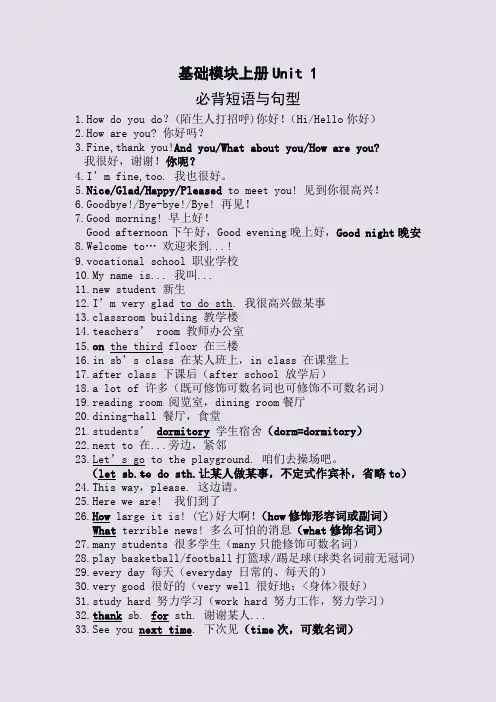
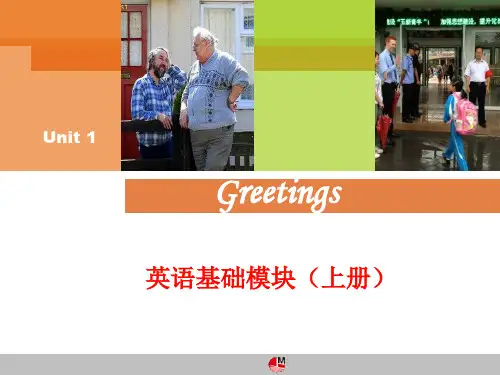

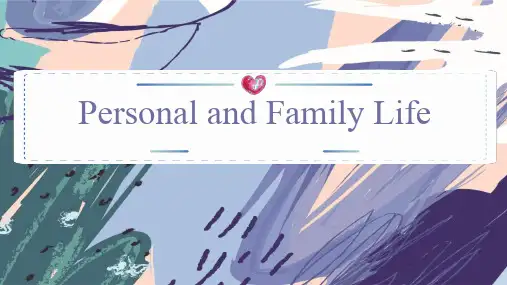
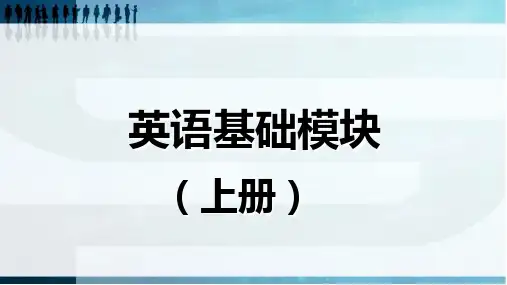
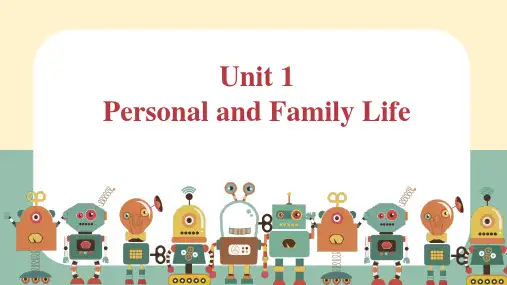
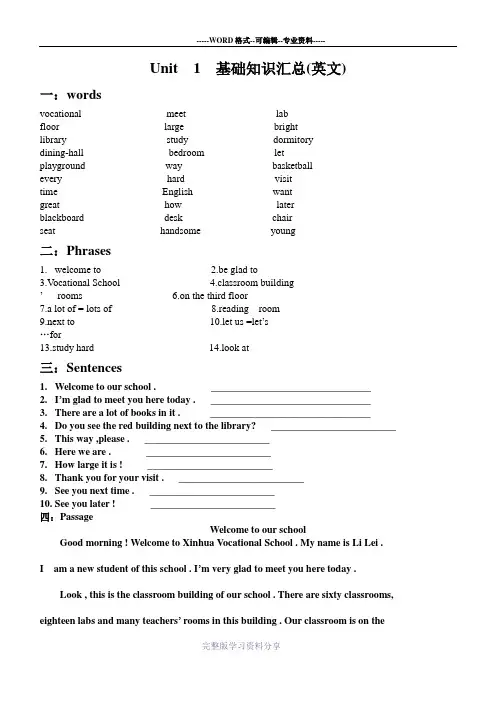
Unit 1 基础知识汇总(英文)一:wordsvocational meet labfloor large brightlibrary study dormitorydining-hall bedroom letplayground way basketballevery hard visittime English wantgreat how laterblackboard desk chairseat handsome young二:Phrases1.welcome to2.be glad to3.V ocational School4.classroom building’rooms 6.on the third floor7.a lot of = lots of 8.reading room9.next to 10.let us =let’s…for13.study hard 14.look at三:Sentences1.Welcome to our school . ________________________________2.I’m glad to meet you here today . ________________________________3.There are a lot of books in it . ________________________________4.Do you see the red building next to the library? _________________________5.This way ,please . _________________________6.Here we are . _________________________7.How large it is ! _________________________8.Thank you for your visit . _________________________9.See you next time . _________________________10.See you later ! _________________________四:PassageWelcome to our schoolGood morning ! Welcome to Xinhua Vocational School . My name is Li Lei .I am a new student of this school . I’m very glad to meet you here today .Look , this is the classroom building of our school . There are sixty classrooms, eighteen labs and many teachers’ rooms in this building . Our classroom is on thethird floor . It is large and bright . There are fifty students in our class . Thatbuilding is the school library .It is a new building . There are a lot of books init .There are four reading rooms in the library .We can read and study in the readingrooms after class . Do you see the red building next to the library ?That is thestudents’ dormitory .There is a large dining-hall and many bedrooms in it .Now let’sgo to the playground of our school .This way , please .Oh, here we are ! How largeit is ! Many students play basketball and football here after class every day .Our school is a very good school . We love our school . We all study hard here .Well, thank you for your visit . See you next time .Complete the blanks :完形填空Welcome to Center Street. Center Street is a great place to enjoy ___ 1 ___ .There are ____ 2 ____ stores and shops on it. It is a very ___ 3 ____ street. If you want to ____ 4 ___ you can go to the video arcade. It is ___ 5 ___ from the big supermarket. There is also a new park ___ 6 ___ the supermarket. It is ___7 ___ and quiet. You can ____8 ___ your picnic(野餐) in it. If you want to see ___9 ___,you can go to the movie house. It is ____10 __ the supermarket and the park.1 B.you2A.lot of B.a lots C.a lot of D.a lot34A.have lunch B.play games C.buy clothes D.see animals5 D. near678910 D.next to阅读理解。

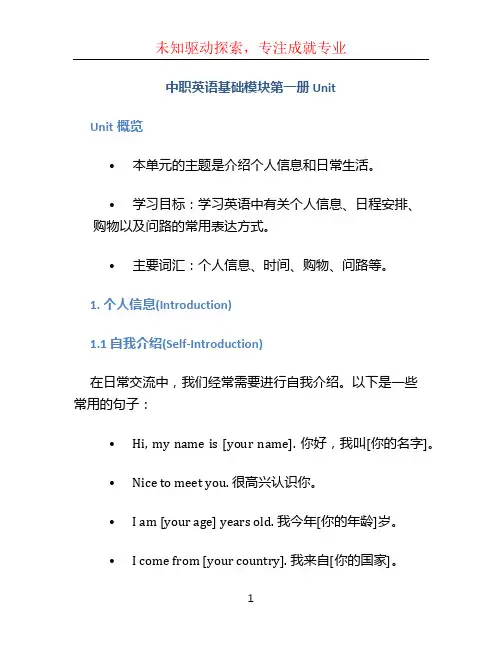
中职英语基础模块第一册 UnitUnit概览•本单元的主题是介绍个人信息和日常生活。
•学习目标:学习英语中有关个人信息、日程安排、购物以及问路的常用表达方式。
•主要词汇:个人信息、时间、购物、问路等。
1. 个人信息(Introduction)1.1 自我介绍(Self-Introduction)在日常交流中,我们经常需要进行自我介绍。
以下是一些常用的句子:•Hi, my name is [your name]. 你好,我叫[你的名字]。
•Nice to meet you. 很高兴认识你。
•I am [your age] years old. 我今年[你的年龄]岁。
•I come from [your country]. 我来自[你的国家]。
•I am a student/worker. 我是一名学生/工作者。
•My hobbies are [your hobbies]. 我的爱好是[你的爱好]。
•I can speak [languages you speak]. 我会说[你会说的语言]。
1.2 个人信息(Personal Information)在日常生活中,我们会被问到一些个人信息。
以下是一些相关表达方式:•What is your full name? 你的全名是什么?•When is your birthday? 你的生日是什么时候?•Where are you from? 你来自哪里?•What is your phone number? 你的电话号码是多少?•What is your email address? 你的邮箱地址是什么?2. 日程安排(Scheduling)2.1 询问时间(Asking for Time)在日常生活中,我们经常需要询问时间。
以下是一些常用的句子:•What time is it? 现在几点了?•Do you have the time? 请问你能告诉我时间吗?•Could you tell me the time, please? 请问你可以告诉我时间吗?2.2 时间表达(Time Expressions)在安排时间时,我们需要使用一些时间表达方式。

Unit 2 Family(Ⅰ)Teaching aims(教学目的及要求):了解有关家庭成员以及有关职业的词汇掌握询问家庭及职业的句型,练习提高英语口语交际能力 识记本单元的词汇Teaching importance and difficulties(教学重点及难点):询问家庭及职业的句型,提高英语口语交际能力 熟练认读本单元英语词汇Class(课时):1课时Teaching methods(教学方法):情景教学法、合作教学法、分组教学法运用情景教学和分组教学的方法使学生积极参与课堂中有关“家庭及职业”的提问——How many people are there in your family ? who are they? What are they?等, 以及根据实际情况回答“There are people in my family. They are my . ……;当同学回答遇到困难的时候,可以求助同学和老师,在老师同学的帮助下完成提问,提高同学回答问题的积极性。
Teaching aids (教具):准备有关家庭成员的图片;录音机Reference book (参考书):教师用书Teaching procedures(教学过程): Step1——warming up:Describe the members of a family in the picture.we can draw the family tree.Family treenurse/policeman/ engineer …There are They are My isa ;…… Divide into groups to make oral practice with above useful expressions . Step 2——new words and expressions⑴be kind to …“对…和蔼可亲”be friendly to …“对…友好”eg:Our teacher is very kind/friendly to us.⑵enjoy doing …喜爱做…Eg: I enjoy listening to music.enjoy oneself 玩的高兴,过的愉快Eg:Are you enjoying yourself?⑶live with 与…一起生活Eg:I live with my family.⑷ together withEg: I’ll go shoping together with my friends.⑸also adv. 也,同样Eg:He also asked to go.He has made up his mind to go to the countryside, and I also.与too 的区别Eg: I was there and he was there too.还有 as well/either:Eg: I like you as well.I don’t like him either.总结also 用于肯定句的句中too/as well 用于肯定句句尾either 用于否定句句末⑹ be popular with 受…的欢迎Eg:This singer is popular with young people.⑺ on the right/left ofEg: I sit on the right/left of him.⑻be full ofEg: our class is full of love and warmth.Her eyes are full of tears.Step 3——Read the new words and expressions over times folling the tapes.Homework :(分层次作业)1、To remember the new words and expressions.2、To preview the “Family”,complete the Reading Comprehension onpage 12 in textbook.Blackboard design:( 板书设计)Unit 2 Family1、Family treeJobs :Useful expressions:How many people are there in your famiy?There are .Who are they ?They are .What are they?My father is a ;my mother is a ; my brother isa ;……2、new words and expressions⑴be kind to …“对…和蔼可亲”be friendly to …“对…友好”⑵enjoy doing …喜爱做…enjoy oneself 玩的高兴,过的愉快⑶live with 与…一起生活⑷ together with⑸also adv. 也,同样与too 的区别还有 as well/either:总结also 用于肯定句的句中too/as well 用于肯定句句尾either 用于否定句句末⑹ be popular with 受…的欢迎⑺ on the right/left of⑻be full ofTeaching reflection:(教学后记)1、要求每个同学都能按照板书上的交际用语根据实际情况回答问题,提高同学的口语交际能力。
中职英语基础模块((上册))u n i t_------------------------------------------作者xxxx------------------------------------------日期xxxxUnit 2 Family(Ⅰ)Teaching aims(教学目的及要求):了解有关家庭成员以及有关职业的词汇掌握询问家庭及职业的句型,练习提高英语口语交际能力识记本单元的词汇Teaching importance and difficulties(教学重点及难点):询问家庭及职业的句型,提高英语口语交际能力熟练认读本单元英语词汇Class(课时):1课时Teaching methods(教学方法):情景教学法、合作教学法、分组教学法运用情景教学和分组教学的方法使学生积极参与课堂中有关“家庭及职业”的提问——How many people are there in your family ? who are they? What are they?等,以及根据实际情况回答“There are people in my family. They are my . ……;当同学回答遇到困难的时候,可以求助同学和老师,在老师同学的帮助下完成提问,提高同学回答问题的积极性。
Teaching aids(教具):准备有关家庭成员的图片;录音机Reference book(参考书):教师用书Teaching procedures(教学过程):Step1——warming up:Describe the members of a family in the picture.we can draw the family tree.Family tree复习有关描述职业的词汇:worker/ teacher/ manager/ doctor/ student/ driver/ farmer/ nurse/policeman/ engineer…练习询问有关家庭及家庭成员职业的简单句:How many people are there in your famiy?There are . Who are they ?They are . What are they?My father is a ;my mother is a ; my brother is a ;……Divide into groups to make oral practice with above useful expressions .Step 2——new words and expressions⑴be kind to …“对…和蔼可亲”be friendly to …“对…友好”eg: Our teacher is very kind/friendly to us.⑵enjoy doing …喜爱做…Eg: I enjoy listening to music.enjoy oneself 玩的高兴,过的愉快Eg:Are you enjoying yourself?⑶live with 与…一起生活Eg:I live with my family.⑷ together withEg: I’ll go shoping together with my friends.⑸also adv. 也,同样Eg:He also asked to go.He has made up his mind to go to the countryside, and I also.与too 的区别Eg: I was there and he was there too.还有 as well/either:Eg: I like you as well.I don’t like him either.总结also 用于肯定句的句中too/as well 用于肯定句句尾either 用于否定句句末⑹ be popular with 受…的欢迎Eg:This singer is popular with young people.⑺ on the right/left ofEg: I sit on the right/left of him.⑻be full ofEg: our class is full of love and warmth.Her eyes are full of tears.Step 3——Read the new words and expressions over times folling the tapes.Homework :(分层次作业)1、To remember the new words and expressions.2、To preview the “Family”,complete the Reading Comprehension onpage 12 in textbook.Blackboard design:( 板书设计)Unit 2 Family1、Family treeJobs :Useful expressions:How many people are there in your famiy?There are .Who are they ?They are .What are they?My father is a ;my mother is a ; my brother is a ;……2、new words and expressions⑴be kind to …“对…和蔼可亲”be friendly to …“对…友好”⑵enjoy doing …喜爱做…enjoy oneself 玩的高兴,过的愉快⑶live with 与…一起生活⑷ together with⑸also adv. 也,同样与too 的区别还有 as well/either:总结also 用于肯定句的句中too/as well 用于肯定句句尾either 用于否定句句末⑹ be popular with 受…的欢迎⑺ on the right/left of⑻be full ofTeaching reflection:(教学后记)1、要求每个同学都能按照板书上的交际用语根据实际情况回答问题,提高同学的口语交际能力。